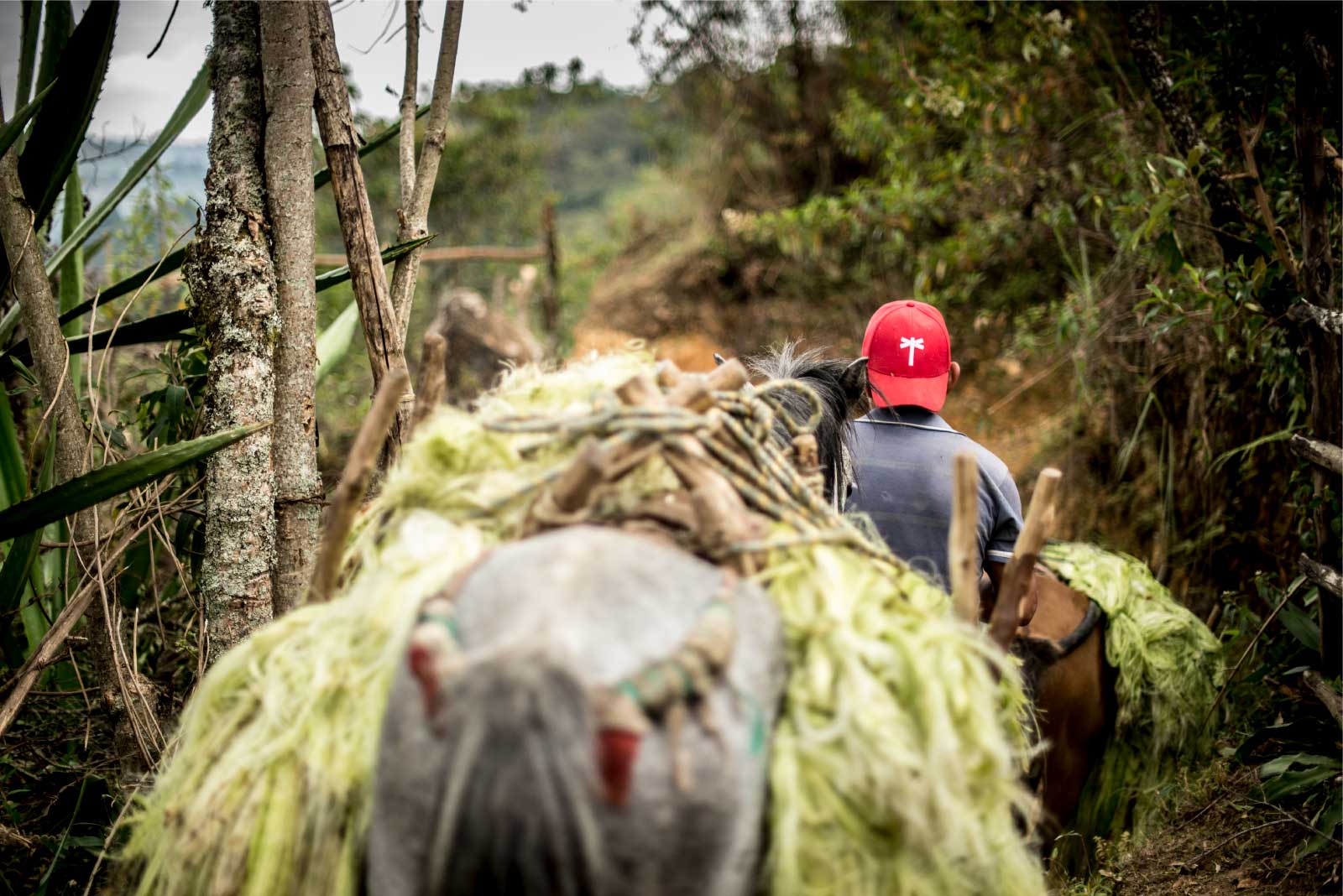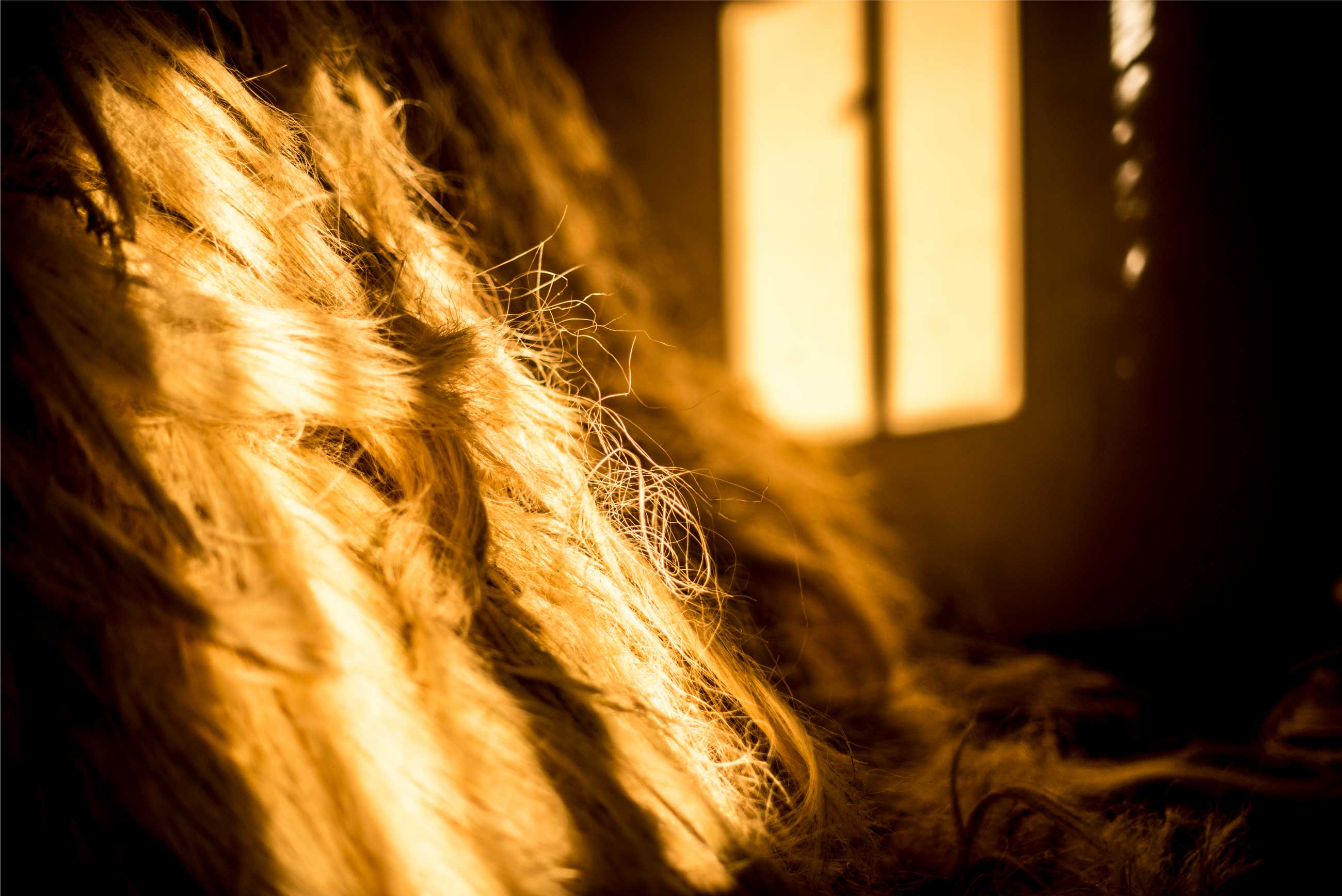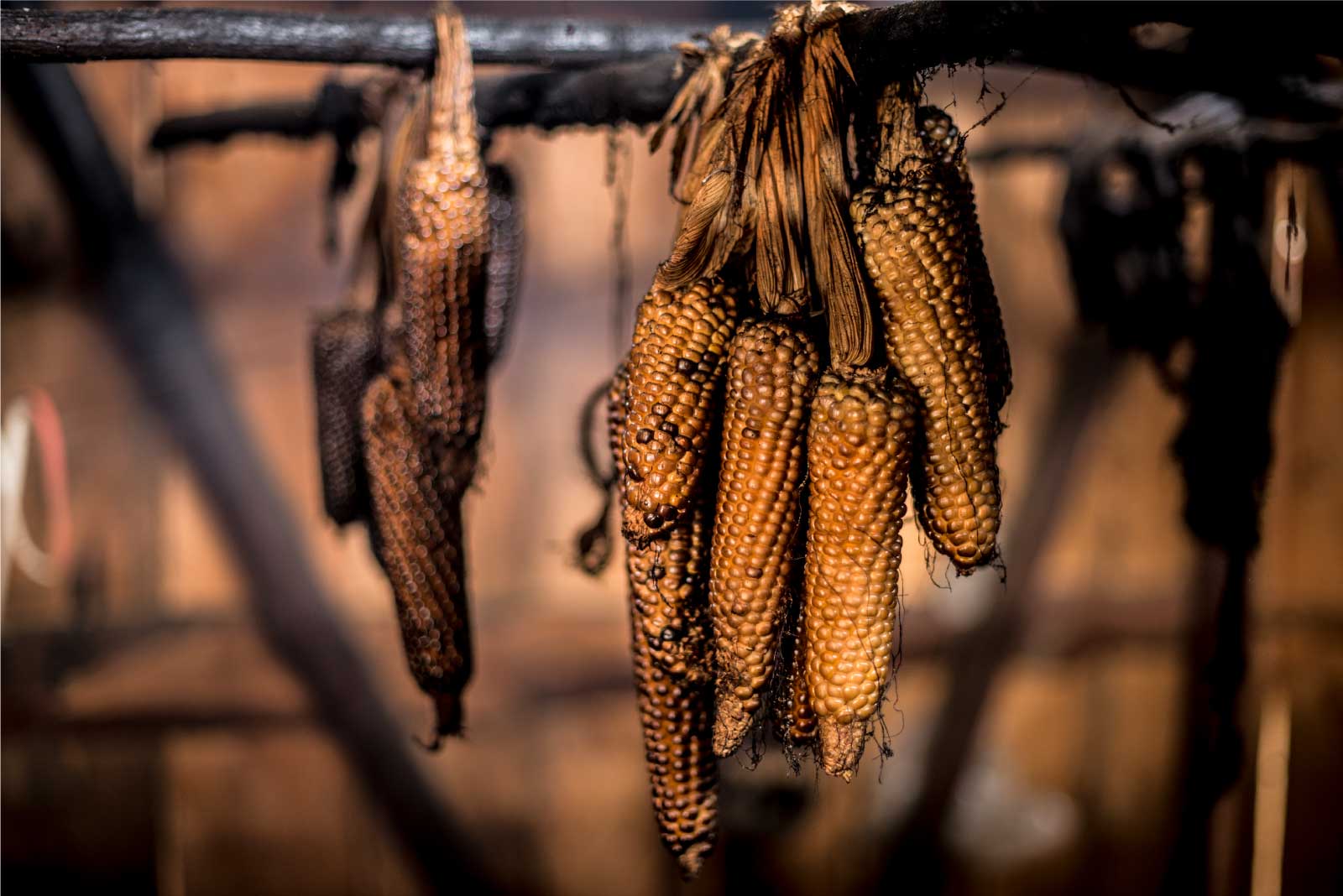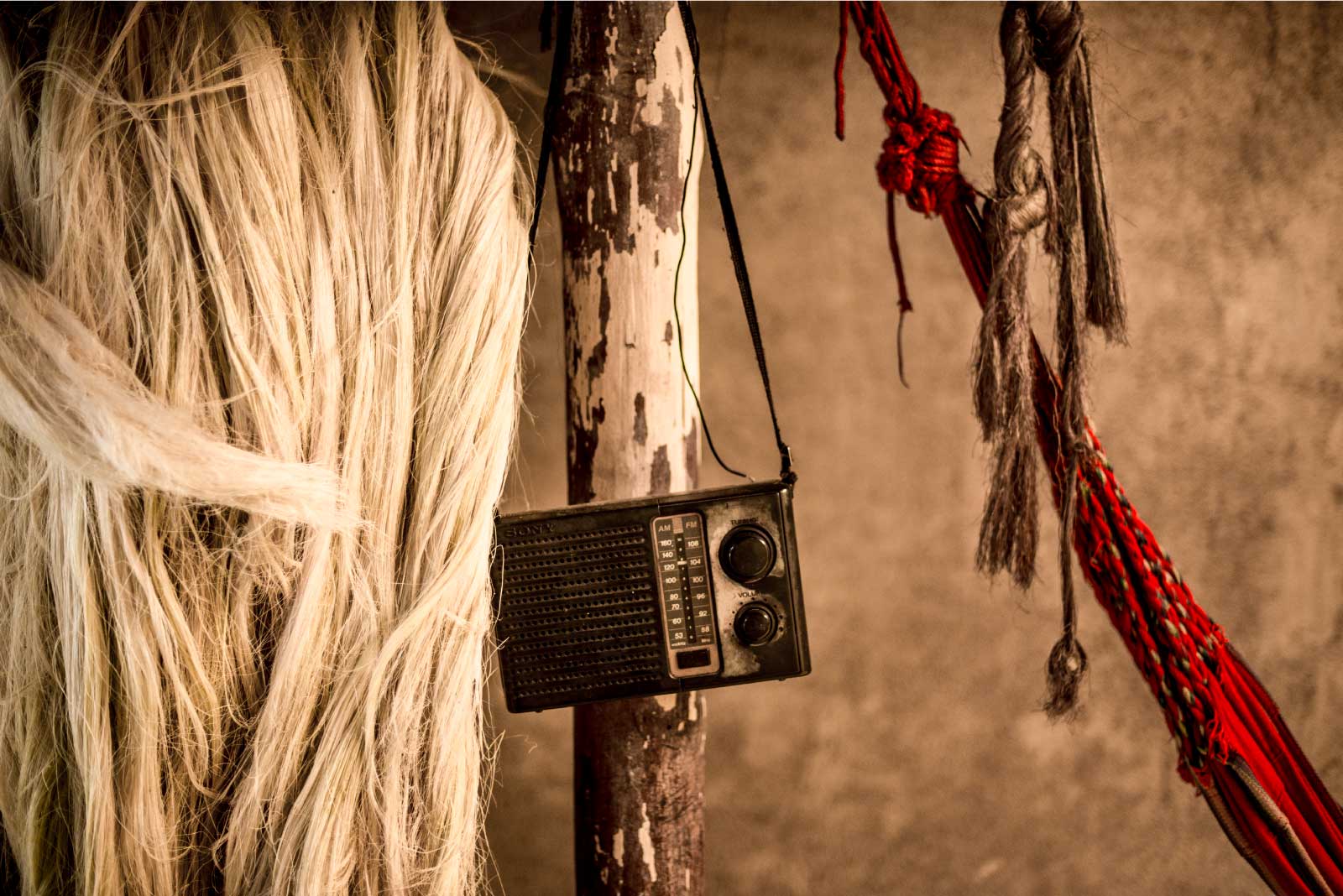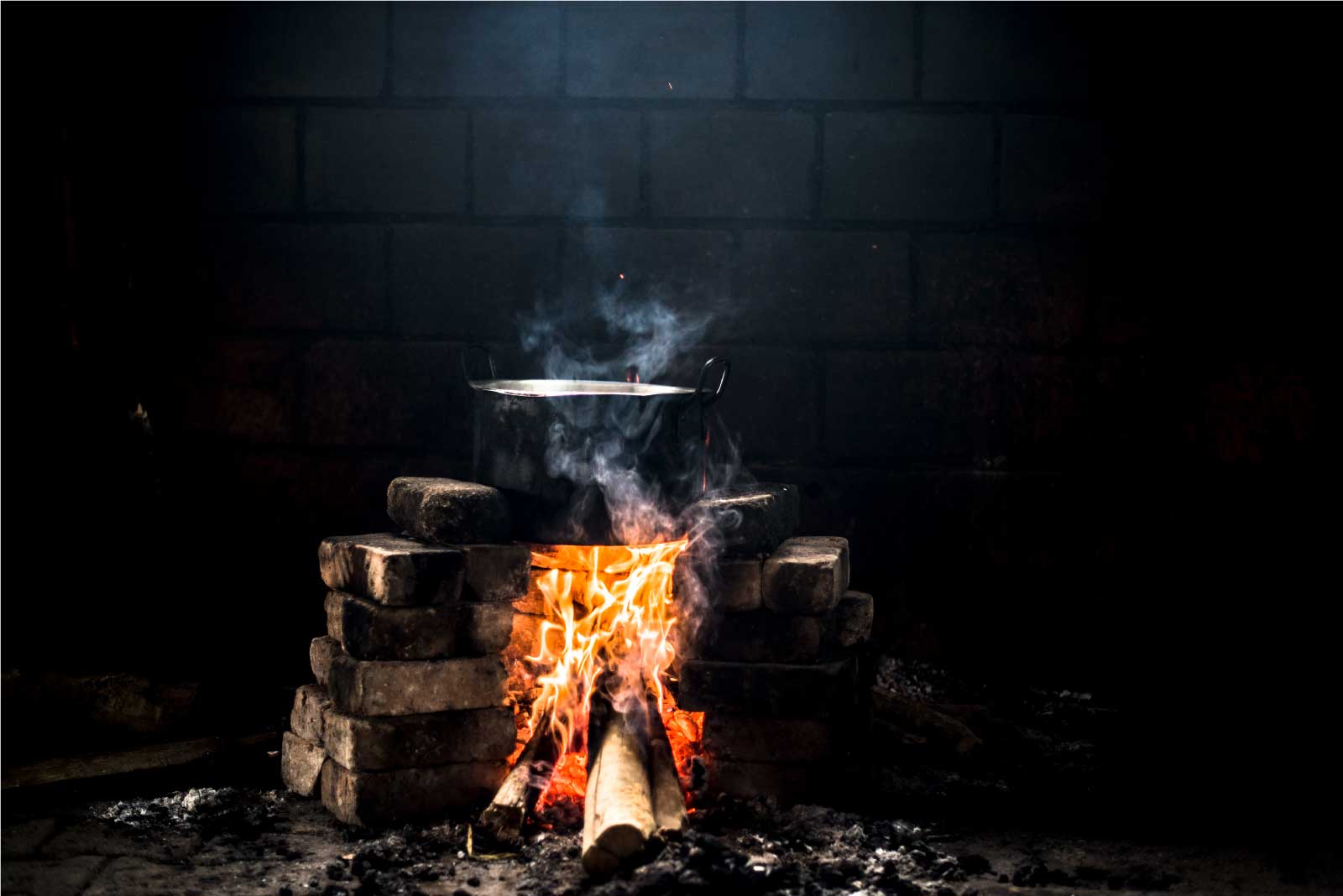I
THE TIME I LOST MY BRAIN
The land where the Nasa people and all the animals live, the land where there are rocks and bodies of water, is the big house. Beneath and above this house, there are other beings. According to the tales told by the indigenous people, there are being whose existence most of us can’t even guess at. The life of the Nasa people consists in maintaining the harmony, the balance between those elements that form the cosmos and that, in the hands of the elders, of the old wise men, become as clear as a line that ends in two spirals, a line crisscrossed by multiple horizontal and vertical lines that form a net. That’s the cosmos seen and lived by the eye and the heart of the Nasa people. When this balance is broken in some corner, what we call disease ensues: individuals get sick, communities get sick, the land gets the sick. And the gods are angered.
It was Thursday, the day of the market at the reserve , and most of the people were in the town square buying, selling, loading, and unloading. He wasn’t. The day before, they had worked at the mill, so they already had a canoe filled with guarapo. But they still had around 40 sugar canes, so he left to finish the milling. His nephew and four workers who were helping him came along.
The horse walked around in circles dragging the tonto: a hard and heavy wooden post that turned the wheels of the mill. He put in the sugar cane stalks in the mill so that, with each turn of the horse, the rollers would crush the crane and extract the sweet juice used to make panela, the same juice that, if allowed to ferment, produces the guarapo, the main beverage in any party.
Reserves are a legal and socio-political institution formed by one or more indigenous communities with collective property rights over lands where they have their own justice and political system. After a long struggle led by indigenous communities, reserves were legally instituted by articles 63 y 329 in the 1991 Colombian Constitution.
Back then, I was already a partier. It was because I wanted to finish with those canes that that thing happened to me. The foot of the mill was a stick with two screws, and the tonto was like a crooked elbow. The first thing was that the tonto struck me, and when it struck me I saw a flame, and, right then and there, I passed out and fell.
The four workers saw him go down and fled. His nephew, who was just a child, stared at him dumbfoundedly as the horse kept on turning and turning and the rope entangled him, while he was still unconscious on the floor. When the horse felt that the going was suddenly harder, he gathered his strength and stepped forward, pulling the rope that already held his head against the ground even further. That’s when the screw penetrated his skull.
Through that hole the brain that allows me to feel came out, and that’s when I became paralyzed.
Just a few days ago, they’d been chewing coca leaves mixed with mambe * or powdered lime. He had received the coca, a sacred plant, and turned it by making it travel throughout his body from the right side to the left side, thus removing the “dirty part.” This time, though, the traditional doctor, the one capable of reading the signs revealed during the mambeo, and also, above all, the one with the power of Thunder and the one capable of interpreting those signs, saw that it wasn’t a good omen for Jhon Jarvi. She told her so: Bad sign, something bad is going to happen. He was supposed to go through a cleansing ritual immediately, but Jhon Jarvi didn’t do it. He failed to balance himself with the power of the sacred plants.
An alkaline reactive, as part of a ritual known as mambeo.
Then came that Thursday, the day of the market, December 28th, 2004.
Amid the blackness of the night in the moorlands and the lower part of the mountains, bright lights, like small stars, dance all around. The candelillas * are like lighted tobaccos moving through the forest. They say the candelillas are evil, news of future evils that are coming to warn people so that they can try to prevent them before they happen. They also say that it’s not only candelillas, but also birdsongs, the stone you bump against, the gust of wind that hits your face, the capricious forms of the clouds –they are all cautionary voices from Mother Nature.
Candelilla: firefly
Candelillas are like bees, but they are evil, and they have very long eyelashes and at night, when they are lighting all around, they do bad things to people. If I had caught that candelilla before the accident, well, nothing would happened to me, but I forgot it because I never thought that would happen to me.
After that day in the mill, the traditional doctor said that Jhon Jarvi had two candelillas, two evils that followed him and that Jarvi was therefore condemned unless he hunted them down.
It all happened quickly. The confused look of his nephew who stared at him without understanding that what was it that was coming out of his uncle’s head; the news of what happened reaching the town; his brothers running to help him; doña Rosalbina crying for her son and seeking the traditional doctors. He was out, like a dead person, as they transported him in a car from Pueblo Nuevo through bumpy dirt roads towards Caldono. Then, the ambulance roaring through the Pan-American highway towards Popayán. Elsa, his sister, hugging the driver of a motorcycle, trying to keep up with the pace of the ambulance.
He won’t live, he won’t live anymore! In a few hours we’ll be letting you know. A surgery.
He hasn’t woken up, he may never wake up.
While he slept his long dream in the hospital, Rosalbina worked with the traditional doctors. All the way from the town, they balanced with coca and the power of the spirits. They healed in the hospital and chewed coca leaves with mambe entire nights, waiting for the Jhon Jarvi’s candelillas.
I didn’t feel any of the things that were being done to me. That is, my spirit was already on its way to heaven; and I was crawling.
In the dream I was in a sort of grass field. I was like this, crawling and looking out. There was a big house and the dead were in a coffin in one of the rooms. I looked and looked, I crouched and tried to see if they were people I knew, but they were all strangers. I kept going and looking and looking, and, suddenly, a white bull appears charging at me. Then I ran, and when I was outside, I came back and felt that I was in the hospital. That’s when the feeling came to me. The bull was the one who woke me. If it wasn’t for the bull, I don’t know where I’d be. I think I would have died, but, since it wasn’t my day, the bull allowed me to live.
After a month in the hospital bed, Jhon Jarvi woke up. He couldn’t recognize anyone, and he was only able to move his eyes. They said that his eyelids were nearly shut, as if he were a Chinese person. His left side was stiff, he couldn’t see well, and he couldn’t talk. He came back to town in a wheelchair and with a constant pain that refused to disappear.
Look, all my head hurt, even my teeth hurt. When the traditional doctor came from the San José de los Monos county, she cured the pain, because she fashioned the medicine with a spirit and she caught a candelilla and poured the medicine on top of it and that cured the pain.
Later, Jhon Jarvi went with Don Mario, another traditional doctor, in search of the candelilla that he was still carrying. The two of them went into the river and waited for midnight to come. They chewed some coca leaves with mambe and the doctor blew on Jhon Jarvi’s head with sacred plants. Wrapped in the mist, they waited for hours, but the second candelilla never arrived. Soaked, they climbed the skirts of the mountain and headed to town.
That is why I walk like this –sort of crooked. It’s the evil spirits that can’t be caught that easily.
I don’t know how many grams I lost, but either way I lost my brain and my left side is paralyzed. That’s why it’s like this, as if it were dead. I didn’t feel anything, I couldn’t talk. In short, I was like a statue.
Now, Jhon Jarvi is going down the edge of the mountain, his left hand closed around itself, as if he was hiding something inside. All his weight rests on his left leg, which lags a little behind the other, but moves forward nonetheless. Jhon Jarvi walks pulling two beasts loaded with fique fibers. They go down the steep mountain until they reach the river. In the water, amid round stones, the fiber looks like the long sets of hair of a submerged person. Jhon Jarvi’s rubber boots step on the fiber to remove its green color, and, little by little, the hair turns whiter and becomes pita fiber.
It was very hard to talk or to laugh because when you laugh everything moves. Therefore, I couldn’t laugh. In the end, my mouth opened a bit and I could laugh, so the neighbors would come and talk recocha * with me. They said it was therapy, and, indeed, it was a therapy, because I had to strain myself to laugh. Little by little, the brain started getting better. What I had lost returned little by little and that’s when I was able to talk and laugh. Now I can defend myself, that is, I can recochar: if it’s in Nasayuwe, recocho. If it’s in Spanish, I also recocho.
Recocha, in Colombia, refers colloquially to a carefree moment between friends filled with fun and jokes.
In a place that belonged to his grandparents, Jhon Jarvi lets the pita fiber fall on the grass. In ropes suspended over a cane structure, he extends the veil of slightly golden pita fibers until he is completely covered by it.
Today, everything has changed a lot. Now I can sort of run and I can work like a normal person, like this. Before, I couldn’t work and that was ugly, very ugly, because [it meant] I couldn’t do anything.
In the living room, packs of pita fibers accumulate on top of each other until they reach the ceiling. The morning light pours through the window and the bars of the frames can be seen over the sets of hair that are ready to be sold to make ropes and sacks. Outside, Jhon Jarvi’s second candelilla still flickers in the mountain.
II
ON THE STREETS THEY SHOUT “WITCH!”
At five or six years of age, when she arrived in Popayán, she couldn’t understand a single word of Spanish. Her tongue and her ears only knew the sounds of Nasayuwe, her people’s language. She remembers that after that first week, she could already understand what she was expected to do. After a month, she knew how the lords liked their cooking. Even though the table was quite high for a child’s eyes, she found a chair she could step on to be high enough to cook.
She lived there, she lived working for the white men, until one day a note was delivered to her: her nephew, the one who lived with her mom, had hung himself. Now the old woman would be all alone.
At five in the afternoon –that’s when I read the little paper. Dawn came, and I was packing clothes. Then I came here. No one will stop when my mind is set. My kid’s father wanted to stop me from leaving. He was 45 years old and I was brat of 16, but I was very obedient. That man used to tell me: You are good woman, you are better than my woman. I didn’t know he was married. I was thrown in there and then I said, No, I won’t live with a married man. I grabbed all my clothes, I packed, and I came here.
Back in her community, surrounded by fields and Nasayuwe *, Ana María met the man who would become her husband, the man who swore in front of a priest that he would be by her side in good and bad times, till death do them apart. She didn’t meet Domingo in a dance, in the market, or in a road. She was walking, and he approached her. He was lost so he started walking with her.
Nasayuwe: the language of the Nasa people.
He stuck to me. That’s why, when we fight, I tell him: Go away, you already found the road. I was 21, he was 12 or 13 years old. I forced him to grow [laughter] and we live alright. We are even doing jail time together. With Domingo, I have four children and with the other (man) I have five.
People in town learned about it gradually. The news started going around when they realized that there was someone missing from the community. The indigenous guard started searching all around the territory, and the elders and the traditional doctors began chewing coca leaves with mambe to find the lost one. In a land that had seen men from all sides bearing rifles –the Quintín Lame, M-19, and FARC guerrillas, and paramilitary groups—if someone is missing, terror ensues.
When they found the comunero, he was already dead. Now they had to find his killers.
There were two men and a woman. The three of them were made to stand in front of the assembly of all the comuneros from Pueblo Nuevo, who were gathered to decide whether they were guilty and “a remedy” was in order. For the faults –the crimes, as non-indigenous jurisdiction would call them—are a disease, an imbalance that was must be remedied. There was fuete *, their legs were lashed. There was a bonfire over which the guilty ones were forced to turn. There was cepo **, and the three were hung from tied feet. There was a ceremony where the legs of one man and the woman were sullied, stained with feces and dirt to deprive them of the power that Thunder had given them, allowing the traditional doctors, the bearers of power of nature and spirits, to act. Then, the assembly agreed on the punishment: 35 years “as part of the patio prestado *** (loaned patio),” which means that, even though the indigenous community exercised its own justice, it decided that the remedy wasn’t enough to atone for the crime, so the guilty would go to prison. The community doesn’t have one, so they asked the Colombian State to admit some of their own in their prison system.
Fuete: a physical sanction typical of the Nasa, Embera, and Chamí, which consists in lashing the culprit with a bull whip or with medicinal plants. It’s used symbolically to represent lightning, a purifying element.
*Cepo: a form of physical sanction in which the condemned man or woman’s ankles are trapped between two logs, leaving them without any movement in a painful position.
**Patio prestado: Starting in 1999, the Regional Indigenous Council of Cauca (CRIC, for its Spanish initials) decided to recur to INPEC’s prison establishments for sanctions of indigenous people who committed crimes that gravely infringe upon the social equilibrium.
Well, the compadre was a militia man, and one day I did see him with a small gun, and I told him: That thing, what is it? I am going to inform the cabildo *. That’s what I told him. Then he said: No, if you rat me out, you’ll see how I blow your head away. So I got scared. My husband also told me: Don’t say anything because they might end killing you, and I can’t be left alone with the little kids. I can’t be a widower because how will I live?
Cabildos are a political and administrative authority of indigenous reserves.
Guns have traveled the Nasa territories hanging of shoulders with different insignias. They came with settlers, with landlords, with guerrillas and paramilitaries. They came with narcos, with soldiers and policemen, in planes and helicopters. Guns have always roamed the mountains of Cauca, but for a long time they’ve been banned from indigenous reserves. Indeed, guns and their bearers can’t enter the land of the Nasa, following a long history of violence, which started with the conquistadors and still rages on nowadays. To bear an arm is a fault, and all actions derived from bearing them or using them are grave faults, dark and heavy forces that disturb the balance of the Nasa world.
Ana María says that the man who turned up dead was a thief who had come to steal several times and who had threatened to kill her once. But where she places her eye, she places her hand, and she got rid of him with her fist.
Before, we used to be butchers. We searched for cattle, we sold it, and we were doing very well. But with that man and his weapon it all came tumbling down.
Domingo and his compadre confessed to killing him. They said that she brought about the homicide through the power of traditional medicine. They said she carried out spiritual work in the house of the cabildo to prevent authorities from finding out what the other two were doing, and that she gave strength to the guns, so they could fulfill their mission.
Sometimes, on the streets they shout “witch,” they say “murderer.” You have horns. You have a tail. That’s what they say, but most people don’t know or understand. They say: since they killed him, she’s a devil. I don’t care, the only one who knows the truth is the one up high.
What came afterwards was prison in Popayán.
In prison, we were all mixed together. There were paramilitaries, there were guerrillas, there were marihuana consumers, everything. You had to live there, but if you coexisted well, nothing would happen to you. If you coexisted badly, well there fights and you’d get stabbed. But you find good girl friends, good friendships. Everyone loved me, even the guards, because I’d do everything. They’d send me to get coffee, they’d send me to bring books –I did everything they wanted.
While she was in a woman’s prison, Domingo and his compadre were in a men’s, each of them serving their sentence.
One special day, they brought him to me. “Day of the married,” they say, but I don’t know what that means, I don’t understand. That day they brought Domingo in cuffs to me. Other times, the women would be taken in a van, or a couple of times in a bus, but it was tiresome to go in. They would pat you and you weren’t allowed to have earrings, rings, or a bra, because everything would beep. It was very tiresome. But he’d get angry when you didn’t show up. He’d say: Why don’t you love your husband? So I was forced to go. Sometimes I would regret going. Sometimes I’d get angry because I am in jail because of him.
Ana María remembers that she managed to send some letters to her reserve’s cabildo, to Cauca’s authorities, to president Santos, even. She asked to be released from prison, to, at the very least, be allowed to do her time somewhere far away from that place, somewhere with her own people.
They let me out. And my husband and his compadre. I said: Just let me out, but they wouldn’t let me out by myself. Rather, they let all three of us out. I was in prison nearly six years; it was just four months before my sixth year.
After those years in prison, the cabildo decided to bring them back. Many in the indigenous communities have wondered what happens to their own, to the culture and the Nasa identity when they are in penitentiaries so far removed from the indigenous people’s idea of restorative justice, healing, and harmonization.
Well, I don’t know or understand. “Sanction,” the governors and the community say, but I don’t see what that sanction is. I am supposed to be in the kitchen, I have to work in the kitchen on Monday, Tuesday, some Wednesdays, Thursday, Friday, Saturday, and Sunday. But, as far as I can gather, that diminishes the sanction.
The murder of the comunero took place in 2010. In 2016, Ana María, Domingo and his compadre are back in the community with a 15-year sanction that bars them from consuming alcohol, forces them to do community work, and, in the case of Ana María and Domingo, bans them exercising traditional medicine or spiritual work.
He (Domingo) is doing well. We fight sometimes. No couple lives like saints. You often fight over nothing, but that’s it. He is a good worker. The psychologist used to advise me to separate from him because he’d do something wrong again and then you’ll be back in prison, she said. But I made an oath to God, till death do us part, so I can’t. When I mull it over, I can’t.
In the dark kitchen of the cabildo, next to two huge iron pans, two women place a huge and deep pot over a fire. Ana María bends over the pot and stirs the corn soup. As she fans the fire, her face is illuminated by the red light of the embers.
Life on earth, according to the Nasa, is about the fragile balance between the beings that form it, that live on it: between those that are here, those that are above, and those that are below. The balance is broken if the rituals and payments are not done. Accidents ensue, people’s health is compromised, and suffering arrives. The balance is broken because ancestral norms are not followed, or because the force of the spirits is used to benefit a dark cause or to take a brother’s life. It is then that the net that keeps them together is broken. Balance is broken when guns arrive, when a foreign war arrives.
To restore balance, nature’s order, you apply a “remedy.” Sometimes it’s sacred plants and the force channeled by the traditional doctor so that the body heals; it’s hunting candelillas and doing harmonization rituals; others, it’s fuete, cepo, the patio prestado, sanctions.
If everything goes well, if balance is restored through sacred plants and the strength and wisdom of the elders and the traditional doctor; if great rituals are celebrated, and if smaller ones also, summer arrives and after a sunny day the sky breaks and pours its waters. Then, plants grow and animals become fat and strong. Family is united, the body is fibrous to walk the mountain, and the strengthened community resists and flourishes. If land is allowed to rest, if what lies in its entrails is not completely removed, is animals are not hunted beyond what is needed to eat, if the indigenous people help each other in the minga * –then the world is in balance. If the violent men who wage war are cured, the omens are good, and the guardian gods will be pleased.
Minga, tradition of several indigenous peoples of America. It implies the community and collaborative work. In Colombia, also has a political meaning for claiming the rights of indigenous peoples.
